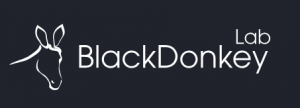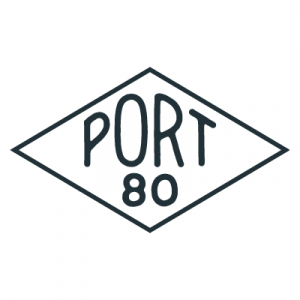In your experience what features have been most beneficial for businesses which build a successful multilingual website?
Reaching clients, customers or users in their native language can be a powerful indication that they are valued. This, in turn, can lead to higher user engagement.
What are the common misconceptions businesses have about creating a multilingual website?
The biggest one is that installing WPML will automatically translate their site for them. WPML is a fantastic plugin that allows virtually anything about a site to be translated…but it isn’t designed to do the actual translation. That’s what the WPML partners are for.
Give some insight into the process of building the website. What are the first steps you take with the client, what happens in the first meeting, how often do you update them etc.
First steps are always discovery-related: who is the site for? What don’t you like/what isn’t working about the current site? What problems are we trying to solve?
Out of this falls a game plan for the structural changes, and these then inform the new design direction: fireframes, renderings and specific design elements follow until everyone is happy with the design.
From here it’s a combination of code and style development and content creation. For multilingual sites, I always encourage multilingual content right from the start. This does two things: it exposes any language-specific issues (such as string length or RTL issues) and it gets the client used to the process of how multilingual sites work.
Once the site is done and the content is in place we do a thorough page-by-page review to identify any outstanding issues. These are then addressed, and the site goes live once the client is 100% happy.
What should businesses prepare before they commit to building a multilingual website?
Prepare for things to take longer. Remember for every language you’re doubling the site content, and it takes time to manage that content.
Finding a translation service you trust is crucial, especially if your site deals with technical or industry-specific language. Finding one that understands how WPML works will save you a lot of time in the long run.
What are the best plugins for businesses?
If you ask any developer they’ll tell you their own secret sauce that makes up their go-to plugin mix. I have a mix I use during development for things like debugging and speed testing, but for end users, I’d say that a solid caching plugin is crucial, Akismet for handle the spam, and a backup plugin that suits your needs (my go-to is Updraft).
How can businesses make your life as a developer easier when you are building their website?
Don’t be married to a solution before you’ve described the problem.
By nature, web developers are problem solvers and we are steeped in how websites work in every sense of that word. If a client can articulate a problem they are facing, it’s a near certainty that we can provide a solution they may not even be aware of. And if a client is fixated on a solution they think is the best (but isn’t!) that inertia can lead to a lot of extra work.
What is Black Donkey Lab: Black Donkey Lab offers creative digital solutions in website, content creation and marketing management. It is based in the Netherlands.
In your experience what features have been most beneficial for businesses which build a successful multilingual website?
In-depth analysis of product range in combination with in-depth keyword research. Matching each product with a suitable keyword and adding sufficient unique content to each page offers substantial benefits in the long run. Never underestimate the power of the long tail. The more niche the products, the more interesting it becomes to penetrate other languages (less competition).
What are the common misconceptions businesses have about creating a multilingual website?
First of all, it’s important to realize that an expensive translation is not a guarantee to get lots of longtail organic search engine traffic. The key is to combine both a decent translation and clever researching and matching of keywords.
There’s no need to have a huge budget of 20-30k to create a multilingual website. Start small and add content and other languages in due course. Use profits generated by the website to build a larger website. Inevitably, though not immediately, acceleration of lead gen and sales will surely follow. Staying patient and persistent is key. It’s definitely a strategy for companies with a mid-term and long-term vision.
Give some insight into the process of building the website. What are the first steps you take with the client, what happens in the first meeting, how often do you update them etc
The first step for us is to understand the business, its customers, the region, etc. We focus on structure and creating a solid overview of the product lines and applications. Once we understand what they offer as products and/or services, we engineer a website structure (sometimes we start from existing structure if this is on par). We then do our keyword research and start a matching process. Each page receives one or more longtail keywords. We build each page according to best practices. This includes downsizing images and doing SEO on each image.
We build a beta website in one language (in most cases English). After several rounds of feedback, we agree on the final website design, layout and content. Then the beta website is used as a template for the other languages and the content can be translated. For each language, the same longtail keyword matching process for each page should happen. Same process for images for each language as well.
What should businesses prepare before they commit to building a multilingual website?
A detailed overview of product lines and/or services. We need to understand which solutions they offer for which types of problems. This allows us to match all products and services with hidden gem keywords. We always try to innovate and match problem-based and solution-based keywords with products and or services. We avoid using generic brand and product names as focus keywords on pages as there’s too much competition for these words.
Are there any significant benefits to having a multilingual website that businesses are not aware of when they first contact you?
The advantage is that you can reach a truly global audience. This means inquiries from all over the world. As such, a company can diversify its customer base geographically speaking. This is a smart method to hedge risk and to avoid being too dependent on one certain market/country. Diversification in terms of customers is key (although not all types of companies can focus on this due to professional restrictions or because they only operate as a local business).
What are some of the top tips you’d give to businesses thinking about creating a multilingual website?
Check the competition via the Google country-specific domain. Type in several niche-related keywords and check if there is competition. No competition means a no go. Competition means worth a deeper analysis. If the competition seems not very strong website-wise and SEO-wise, then it’s definitely a go. At Black Donkey Lab, we have software to assist with this analysis as well (to check if a certain niche is accessible in a feasible manner for long tail keywords).
How can businesses make your life as a developer easier when you are building their website?
We are entrepreneurs and always focus on lead generation for our customers. Customers can help us by clearly communicating what their strengths are and which products and services need to be focused on (which products have the highest profit margin for example). We also insist on receiving unique, non-duplicate content. Black Donkey Lab has in-house writers who can do it for the client as well. But unique, high-quality content is the key to long-term success online.
Anything else you’d like to add which you think would help a business?
Dare to think globally and give it time. Ranking in search engines takes time and effort. Be patient and persistent and try to consistently allocate a portion of the profits to grow the website (new content, translation costs, backlink strategy, social media).
Never forget that the website is worth a lot of money. The valuation of such a multilingual website can astonish you – Niche-related websites are typically valued at the profit generated per month, multiplied by a factor (12 – 24 – 36).
So a multilingual website can become a true value-increasing asset. An asset which is an investment at the same time.
In your experience what features have been most beneficial for businesses which build a successful multilingual website?
SEO benefits, better conversion rates, better user experience.
What are the common misconceptions businesses have about creating a multilingual website
That any platform can handle the requirement elegantly.
Give some insight into the process of building the website. What are the first steps you take with the client, what happens in the first meeting, how often do you update them etc
If we are going to build from the ground up we will factor the multilingual requirements into the design, making sure we have a layout that works for all languages.
If we are taking over a pre-existing website, we will evaluate the site and hopefully the translations upfront as well.
From there its usually a pretty straightforward process where we can give a timeline and price.
What should businesses prepare before they commit to building a multilingual website?
Businesses should prepare to be able to maintain and translate future content additions to all languages.
Are there any significant benefits to having a multilingual website that businesses are not aware of when they first contact you
Not everyone understands that there are good SEO benefits.
What are some of the top tips you’d give to businesses thinking about creating a multilingual website?
I would suggest talking to a professional that has done this before to make it a quick and seamless process.
How can businesses make your life as a developer easier when you are building their website?
Prepare all translations upfront and have all content ready.



